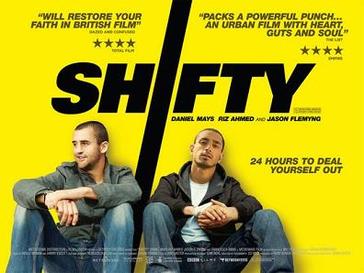As we are starting to bring together research of openings to thrillers, I have been making a proposal to a film opening that I could use as part of my coursework.
Brief Plot Summary
- A woman with amnesia is arrested on suspicion of murder, and she is allowed to make one call in jail, so she calls a man whom she hasn't seen in three years.
- Crime/psychological thriller set in contemporary London
Audience
- I imagine this to be rated at about 15- there would be frequent swearing in the rest of the film (not likely in the opening itself) and some violence (again, not in the opening)
Narrative
- The male protagonist will be walking along the streets of London, he has been here a long time ago with our female protagonist
- As he looks out onto the River Thames, we see a flashback in the golden hour of three years ago when our male protagonist is with the female protagonist, talking about their potential futures and how they will miss each other once they leave school. We find out later in the film this is the last time they saw each other.
- We cross-cut to an interrogation room, present day, where an interrogator is talking to our female protagonist who we just saw in the flashback. They discuss how she has been arrested under suspicion of murder, but has amnesia so can't remember who she's killed and why she's killed them. It is unclear at the moment why she has amnesia.
- She requests to make a call to someone (as it is typical you are allowed one call to someone having been arrested). She dials a number, and we cross-cut back to the male protagonist who picks up the phone.

The themes on amnesia and solving a murder are ideas developed from Memento and The Bourne Identity. However, the idea of developing relationships from years ago is from Thirteen, a BBC series from last summer based on the Madeline McCann case, about a girl who escaped her kidnapper after 13 years of abduction and still thinks she has the same friendships as she did 13 years ago. All her friends have moved on with their lives over the years, but she still has the same attachment as she did as a teenager. I was very interested in using this concept, and I think it would add a feeling of mystery to the story, and make the audience feel some sympathy towards her.
Influences for Location
During the title sequence with our male protagonist, I loved the idea of using locations by the river. In Collateral there is a great opening shot where the camera picks out Tom Cruz in a crowd, which I think would work well with the above location.
When he imagines flashback, I picture him to be at this location by the side of the river. This location is just one road away from the first location near City Hall, and looks incredibly cinematic, but is usually much more quiet. I imagine him to be look out to the river and seeing the flashback further down the road.
For the interrogation room I would like to film it in our theatre at school so I can use a completely blue lighting state, and would be filmed on the stage with the curtains closed. I think this dark blue lighting state would look incredibly eery and mysterious.
Style and Tone
In the opening to Shutter Island, I loved the look of the stark contrast between the flashbacks and the present day. I hope the look of the cold present day and the golden hour flashbacks is something that I could achieve in my opening.
The Virgin Suicides also has a great flashback scene, and I love this very dreamy, etherial look that it gives the girls. Again, I would use this as an influence for the opening.
Sound
The sound in the first scene should be parallel to the action. Diegetic sound would be hyperbolic when the male protagonist walks down the path by City Hall (see first location picture), but when he gets to the second location where he imagines the flashbacks, diegetic external sounds of the river and people walking past would be minimal, with complete focus on the dialogue and the soundtrack. In the interrogation scene, the soundtrack would change tone to sound more menacing, but remaining in the same style. I would particularly look at Sofia Coppola's soundtracks as inspiration.




































